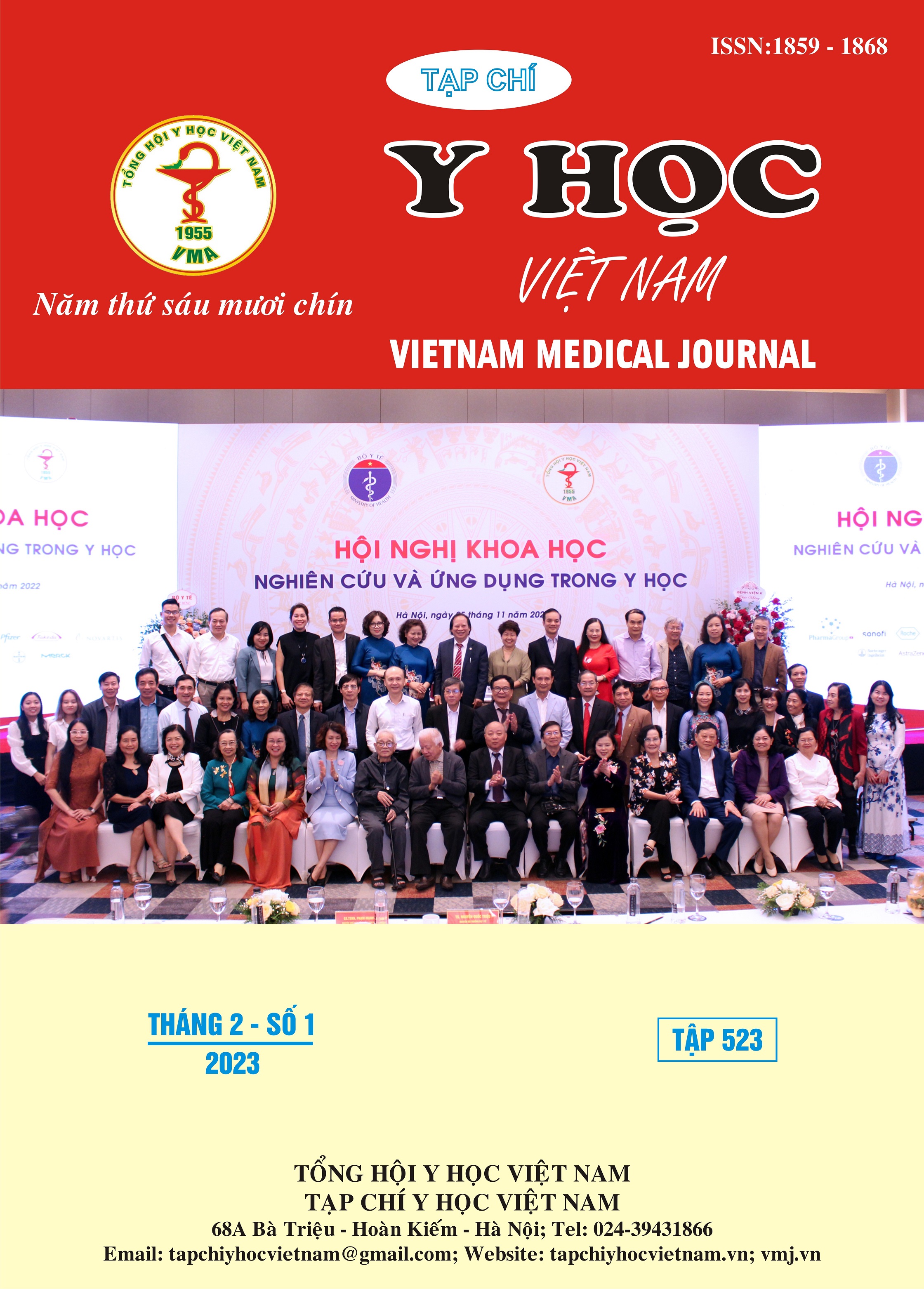REVIEW THE CLINICAL CHARACTERISTICS OF PATIENTS WITH FACIAL ASYMMETRY
Main Article Content
Abstract
Objective: Review the clinical characteristics of patients with facial asymmetry. Subjects: The study was carried out from February 2022 to December 2022, using a cross-sectional descriptive study method of 33 patients aged 16 years old who came to the clinic for facial asymmetry at Hanoi Cental Odonto-Stomatology Hospital, based on the patient questionnaire, clinical examination, analysis of straight face and smiley face images. Results: The average age of male participants in the study was 20.2 ± 4.02 years old and female was 23.1 ± 8.38 years old, 100% of patients with facial asymmetry had chin deviation, in which patients has a high rate of left chin deviation 70.6%, there is no difference between men and women with chin deviation (p>0.05). The proportion of patients participating in the study was 87.9% and 69.7% respectively. In 33 patients participating in the study, 21.2% of patients were evaluated for unilateral crossbite, 48.5% of patients with bilateral crossbite and 30.3% without this symptom. The average chin deviation is 9.84±5.51mm. Mean deviation of soft tissue horizontal asymmetry and deviation of mouth angle are 10.07±7.9mm and 3.28±2.27mm, respectively. The rate of chin deviation of patients with facial asymmetry with class I, II, and III malocclusion is 15.2%, respectively; 9.1% and 75.8%. Class III malocclusion is the most common. The proportion of patients with chin deviation, the mandibular midline will mostly be deviated (84.9%), a statistically significant difference was found between the group of patients with deviated chin and deviated mandibular midline. (p<0.01). Gender factor did not affect the asymmetry on the patient's face (p<0.05). The habit of pushing the tongue is a factor affecting the patient's facial deviation. Conclusion: Patients with facial asymmetry have 100% of the chin deviation. In the majority of 84.9% cases with chin deviation, the mandibular midline is also deviated (p<0.01). Gender factor did not affect the asymmetry on the patient's face (p<0.05). The habit of pushing the tongue is a factor affecting the patient's facial deviation.
Article Details
Keywords
chin deviation, facial asymmetry, horizontal asymmetry, mouth angle deviation
References
2. Bishara SE, Burkey PS, Kharouf JG. Dental and facial asymmetries: a review. Angle Orthod 1994;64:89-98.
3. McCance AM, Moss JP, Fright WR, Linney AD, James DR. Three dimensional analysis techniques—part 1: three dimensional soft-tissue analysis of 24 adult cleft palate patients following Le Fort I maxillary advancement: a preliminary report. Cleft Palate Cranio-fac J 1997;34:36-45.
4. Shah SM, Joshi MR. An assessment of asymmetry in the normal craniofacial complex. Angle Orthod 1978;48:141-8.
5 Masuoka N, Momoi Y, Arji Y, Nawa H, Muratmatsu A, Goto S, và cộng sự. Can cephalometric indices and subjective evaluation be consistent for facial asymmetry? Angle Orthod 2005;75:651-5.
6. Chen Y-J, Yao C-C, Chang Z-C và cộng sự. Characterization of facial asymmetry in skeletal Class III malocclusion and its implications for treatment. Int J Oral Maxillofac Surg. 2019; 48(12):1533-1541.
7. Wang Y, Zhu Y, Zheng S, Yang G, Fu X, Xiao N, Wen A, Zhao Y. A novel method for 3D face symmetry reference plane based on weighted Procrustes analysis algorithm. BMC Oral Health. 2020 Nov 11; 20(1):319.
8. Kim JY, Jung HD, Jung YS, Hwang CJ, Park HS. A simple classification of facial asymmetry by TML system. J Craniomaxillofac Surg. 2014 Jun; 42(4):313-20. doi: 10.1016/ j.jcms. 2013.05.019. Epub 2013 Jun 28. PMID: 23810748.
9. You K-H, Lee K-J, Lee S-H. Three-dimensional computed tomography analysis of mandibular morphology in patients with facial asymmetry and mandibular prognathism. Am J Orthod Dentofac Orthop Off Publ Am Assoc Orthod Its Const Soc Am Board Orthod. 2010; 138(5):540.e1-8.


